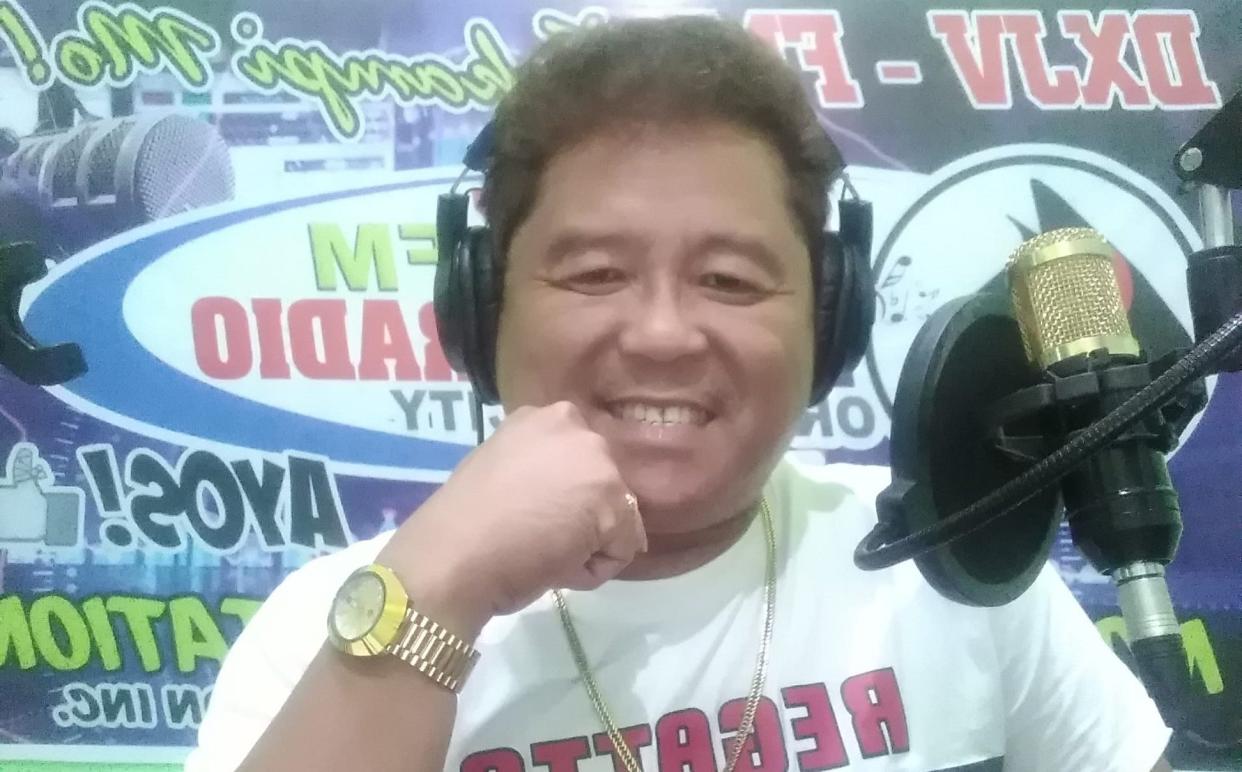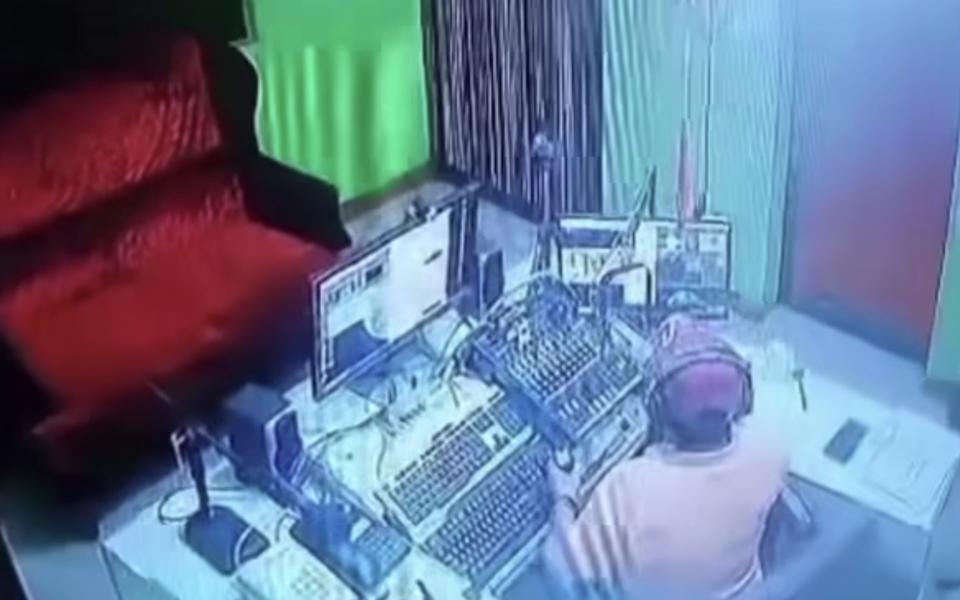Filipino journalist shot dead while live on air

- Oops!Something went wrong.Please try again later.
A Filipino radio anchor was shot dead during a live broadcast, which was being video-streamed online.
Provincial news broadcaster Juan Jumalon, 57, was shot twice by the gunman, who got into the broadcaster’s home studio by pretending to be a listener.
Mr Jumalon was captured on the livestream looking up away from the camera as shots were fired at him before slumping back in his chair.
He was pronounced dead on the way to hospital.
The gunman grabbed Mr Jumalon’s gold necklace, before fleeing with an accomplice on a motorbike.
He was not captured on the Facebook livestream.
Attacked in own home
Ferdinand Marcos Jr, president of the Philippines, condemned the shooting and said he ordered the national police to track down, arrest and prosecute the killers.
“Attacks on journalists will not be tolerated in our democracy, and those who threaten the freedom of the press will face the full consequences of their actions.”
Police are trying to establish whether the attack was linked to Mr Jumalon’s work. They are also checking security cameras to try to identify the gunman.

He was the fourth journalist to be murdered since Mr Marcos took office last year and the 199th since democracy was re-established in the Philippines in 1986.
The killing was described as “brazen” by the Philippine National Union of Journalists.
It added: “The attack is even more condemnable since it happened at Jumalon’s own home, which also served as the radio station.”
Danger for journalists
The Philippines, despite enjoying more press freedom than other parts of Asia, remains one of the most dangerous places in which to work as a journalist.
According to the Global Impunity Index, it is ranked as the eighth worst country when it comes to prosecuting killers of journalists.
Reporters have been the victims of powerful criminal clans and faced harassment from the government.
In May, Cresenciano “Cris” Bundoquin was killed in a drive-by attack in Calapan City in the Philippines Oriental Mindoro province.
And in October last year Percival Mabasa, known as Percy Lapid, was gunned down on his way home.
A month later the Philippines Bureau of Corrections prison chief and a security aide were charged with the killing of the journalist who had been critical of the prison authorities.
In 2009, 32 journalists were among 58 killed in a mass shooting by a powerful political clan.
It was the bloodiest single attack on journalists in recent Philippine history.
It took a decade before some of those involved were prosecuted and, according to Len Olea, the journalists’ union leader, more than 80 suspects remain at large.
While the mass killing was later linked to a violent electoral rivalry common in many rural areas, it also showcased the threats faced by journalists in the Philippines. A surfeit of unlicensed guns and private armies controlled by powerful clans and weak law enforcement in rural regions are among the security concerns journalists face in the poverty-stricken Southeast Asian country.
Journalists were singled out during the six years when Rodrigo Duterte was president.
Many were “red tagged”, marked out as communists, under a system which was first introduced in the late 1960s.
Many of those who were red-tagged were killed, and others faced harassment and prosecution.
According to the journalists’ union, 32 journalists were red-tagged between 2016 and 2022, and at least 23 were killed.
Red tagging continued with the election of Mr Marcos.

